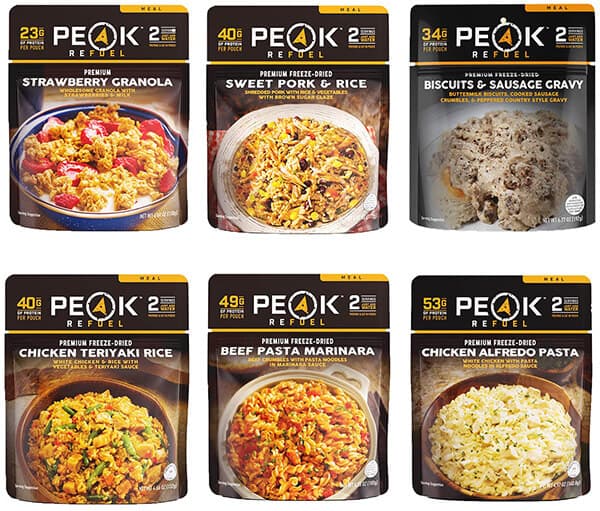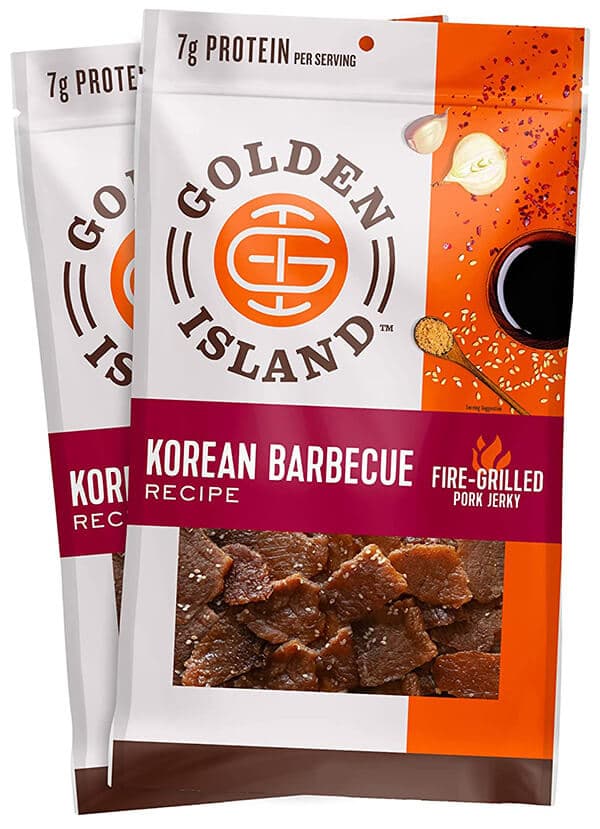Backpacking Gear List

Embarking on a backpacking adventure requires not just courage and will, but also the right equipment. The gear you carry on your back can make the difference between a memorable journey and an ordeal. But with so many items available, knowing what to pack can be a daunting task, especially for beginners.
That’s where our comprehensive backpacking checklist comes in. Designed to make your preparation process simpler and more organized, this list is a thorough compilation of gear you might need on your backpacking trip. From essential items that ensure your basic safety and comfort, to recommended gear that adds convenience, and optional items for that extra touch of luxury or entertainment, we’ve got you covered.
But remember, every backpacking trip is unique - influenced by factors like the duration of your trip, the season, weather, terrain, personal preferences, and more. So, use this checklist as a starting point and adapt it to best suit your individual needs. After all, in backpacking, one size doesn’t fit all. Happy packing!
Table of Contents
Essential
Embarking on a backpacking journey into the great outdoors is an exciting prospect. However, stepping into the wilderness requires careful planning, particularly when it comes to the gear you carry. This list outlines the essential gear that every backpacker should have, no matter the destination or duration of the trip. From the basics of shelter and sustenance to tools for navigation and safety, these items form the core of your backpacking setup.
These items are critical for safety, basic comfort, and navigation. You should not venture out without these. Be sure to read, and bring, The Ten Essentials.
Navigation Tools: Essential for staying on track, even if you’re on a well-marked trail. This could include a map, compass, and/or GPS.
Headlamp/Flashlight: Vital for seeing at night, whether you’re navigating, cooking, or going for a nighttime nature call.
Sun Protection: This includes sunscreen, sunglasses, and a hat. Even if the forecast isn’t sunny, UV rays can be strong, especially at higher altitudes.
First Aid Kit: For treating minor injuries or conditions.
Multi-tool/Knife: Handy for a variety of tasks, from opening packages to making equipment repairs.
Tent/Shelter: A tent, hammock, or bivy sack is necessary for protection from the elements while you sleep. It should be lightweight yet durable, easy to set up, and suited for the weather conditions you’ll face.
Backpack: A sturdy and comfortable backpack is necessary to carry all your gear. Besides a great fit the following features are must-haves when buying a new multi-day backpack:
- Adjustable length or interchangeable length hip belts.
- Side water bottle pockets or pocket for a hydration bladder.
- Load lifters (the straps over your shoulder to lift the pack).
- Rear stretch pocket.
- Hip belt pockets.
Sleeping Bag: A good sleeping bag provides warmth and comfort for a good night’s sleep. It should be rated for the lowest temperature you expect to encounter. Consider a waterproof compression sack to keep it dry.
Fire Starter: Carry a reliable fire starter like a lighter or waterproof matches, along with a backup. A fire starter kit, complete with dry tinder or heat tabs, can be invaluable, especially in damp conditions.
Water Treatment: A water filter or purifier is vital in areas where potable water isn’t readily available. Always treat water from streams or lakes to avoid waterborne diseases. Read out guide on Water Filtration System for a more in-depth explanation.
Water Bottles/Hydration Bladders: For carrying your drinking water.
Food: High-calorie, nutritious food is essential for the energy you’ll need while hiking. Pack high-calorie, lightweight food and think about your meals and snacks ahead of time to ensure you have enough nutrition.

Peak Refuel Variety 6 Pack
Top Pick
4.6 out of 5
Loaded with the protein your body needs to recover from a long day on the trail. Peak Refuel never uses TVP or other filler and is our go-to choice when backpacking.

Golden Island Korean Barbecue Pork Jerky, 18oz
Top Pick
4.6 out of 5
Two 9oz packages, 18 Ounces, and 1440 calories total. With 7 grams of protein and 80 calories per serving, Golden Island Pork Jerky is the perfect protein snack to fuel your day. The 9 ounce bags are resealable snack bags, so your jerky will always be fresh.
Gluten Free. No Nitrites. No Artificial Ingredients. Product of USA
Hiking Boots/Shoes: Good footwear is essential for comfort and safety on the trail.
Clothing: Depending on the weather forecast and expected conditions, pack appropriate clothing. This includes base layers, insulating layers, and rainwear.
If you are going backpacking with a group try and divide some of the essentials up to evenly distribute the weight. For example, someone can carry the tent poles while someone else carries the rest. Definitely weigh your pack and make sure that you don’t over pack and that you spread the load evenly. Remember that 3 liters of water weighs 3 kilograms or 6.6 pounds, which is how I start all trips and then the rest of the water is pulled from lakes and streams.
Recommended
While the essential gear forms the backbone of any backpacking trip, there are certain items that, while not strictly necessary, can greatly enhance your outdoor experience. Our recommended gear list includes items that provide added convenience, comfort, or utility on the trail. Whether it’s supporting you on uneven terrain or helping you cook a hot meal, this gear can make your trip smoother and more enjoyable.
Sleeping Pad: A sleeping pad provides insulation and cushioning against the ground. Choose one based on comfort, weight, insulation (R-value), and durability.
Stove and Fuel: A lightweight stove and fuel. Canister stoves are common for their ease of use and weight.
Cookware (Pots/Pans): Necessary for preparing food, but not strictly required as there are ways to backpack without cooking. Choose lightweight titanium pots, pans, or mugs for cooking and eating. Consider a set designed for backpacking that can nest together to save space.
Toiletries: Including biodegradable soap, toothbrush, toothpaste, and toilet paper. However, a strong case can be made that toilet paper is actually an essential, while the rest is only recommended.
Trekking Poles: They can help with balance and reduce stress on your joints, particularly on steep or rocky terrain.
Insect Repellent: Depending on the season and area, this can be very helpful, or could actually be an essential if you want to not be eaten alive by mosquitoes. I’ve been to places in the Pacific NW where the mosquitoes are so dense that if you didn’t bring insect repellent you would certainly regret it.
Bear Canister: Even if you’re not hiking in bear country, it’s recommended to have a container to store your food and scented items. However, this becomes an essential item in some national parks that require it.
Each adventurer is going to have different needs and preferences, just remember that whatever you pack you have to carry and the more your pack weighs the harder it is on your body. If you don’t think you’ll use it, don’t pack it.
Optional
The beauty of backpacking lies in its versatility. You have the freedom to tailor your trip to your own needs and desires. This extends to the gear you choose to bring along. Our optional gear list includes items that, while not necessary for every trip or every backpacker, can enhance your experience in certain situations or according to your personal interests. Whether it’s capturing high-quality photos of your adventure, indulging in a bit of campsite comfort, or enjoying some downtime with a book, these items offer extra touches of pleasure that can make your backpacking trip truly unique.
These items are nice to have but aren’t necessary for all trips. They’re worth considering depending on the nature of your trip and personal preference.
Portable Charger/Power Bank: For recharging devices like your phone or GPS.
Camera: If you’re interested in photography, consider bringing a good camera.
Camp Chair: A comfortable lightweight chair can be a real luxury after a long day hiking. However, a small foldable pad could also be a welcomed alternative that takes up less space and weighs very little.
Camp Shoes: Lightweight sandals or shoes can give your feet a break at the campsite. I own a pair of lightweight Nuptse Apres Booties from The North Face, which keep my feet warm and cinch tight to keep the bugs out.
Field Guide: If you’re interested in flora, fauna, or geology, a field guide can enhance your experience.
Journal and Pen: For documenting your trip.
Swimwear: If there will be lakes or streams suitable for swimming.
Remember, it’s always important to pack considering the specific conditions and challenges of your trip. Always prioritize safety, and remember that every ounce counts when you’re carrying everything on your back!
- Category:


